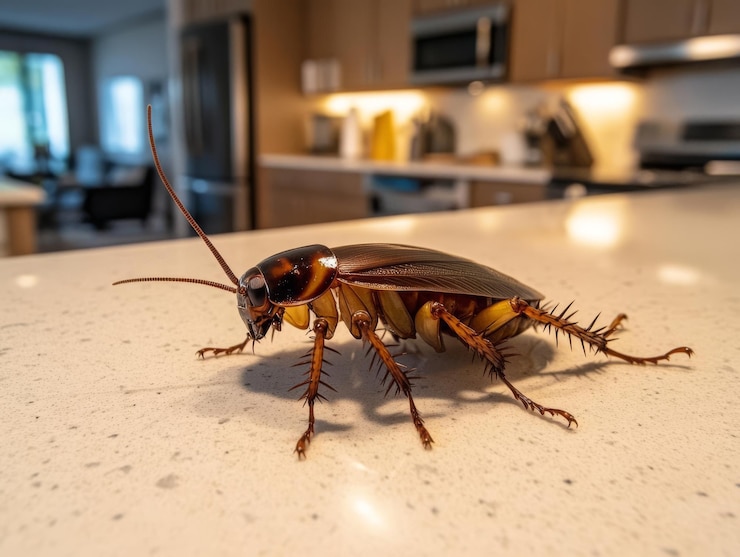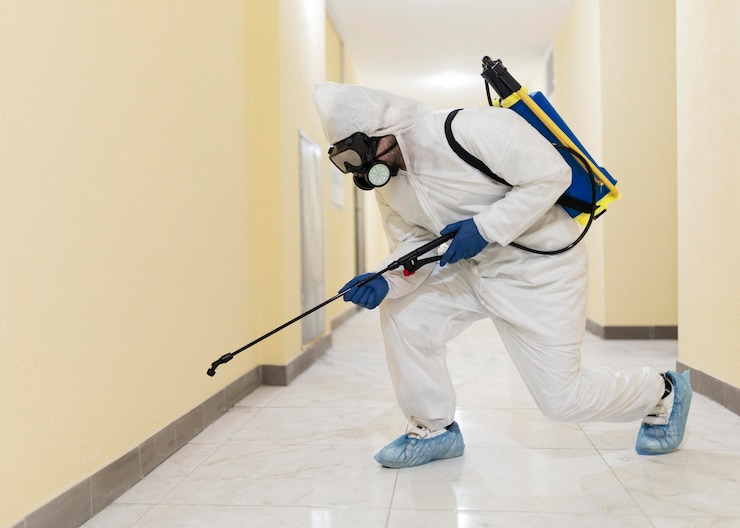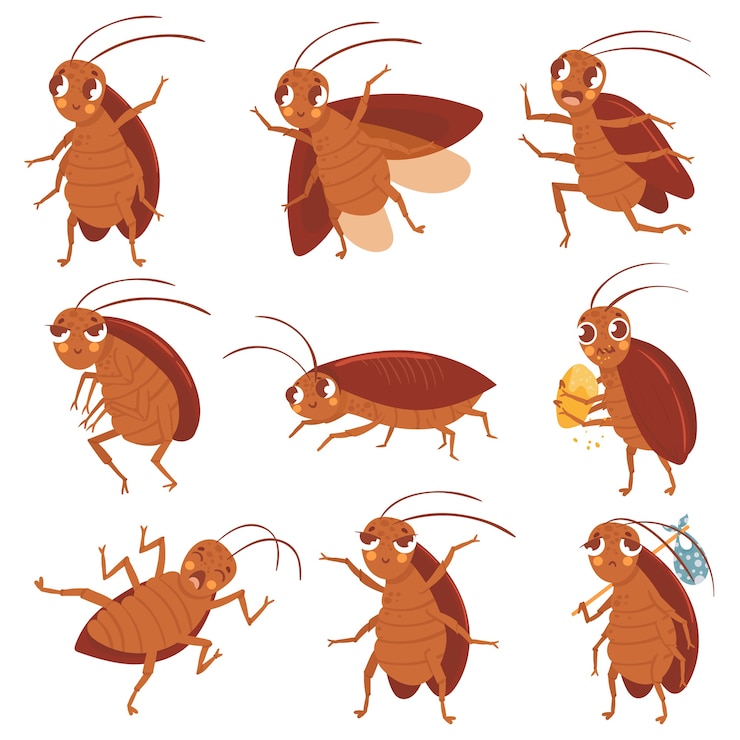How to get rid of cockroaches without pest control

Seal entry points right away. Gaps around pipes, loose window frames, cracks in baseboards–these are all invitations. A tube of silicone caulk and a bit of foam insulation go a long way. Check under sinks, around vents, and especially in basements. You’d be surprised how something as small as a credit card-width gap can become a superhighway.
Cut off food access completely. Not just crumbs on counters–check behind the toaster, the microwave vents, under the fridge. Even pet bowls overnight can be a magnet. I started storing everything in glass or hard plastic containers, and honestly, I wish I’d done that years ago. It made a difference fast.
Humidity makes it worse. These insects thrive in damp conditions, especially under sinks, near laundry machines, or inside wall cavities where pipes sweat. A dehumidifier in the basement or better ventilation in bathrooms can shift the balance. I didn’t think it would matter, but after adding a small fan in the laundry room, there was a noticeable drop in sightings.
Borax mixed with a bit of sugar–carefully placed out of reach of kids or pets–can quietly reduce their numbers. It takes time, but that’s part of the appeal. No harsh chemicals, no strange smells, just steady progress. I left a few bottle caps of the mix behind the dishwasher and near the pantry corners. After two weeks, way fewer signs of movement.
Routine matters more than any one solution. Regular vacuuming, taking the garbage out daily, wiping up spills–even tiny ones–all add up. It’s not glamorous, but it’s probably the most overlooked tactic. There’s no magic trick here, just consistency. And maybe a bit of patience.
Identify Common Entry Points and Seal Them
Start by checking gaps around pipes under the sink. Even a sliver of space where plumbing enters the wall can become an open door. Silicone caulking or expanding foam works well here. Metal mesh followed by sealant adds an extra barrier where rodents might also be an issue.
Next, examine baseboards, floor vents, and electrical outlets. Drafts or visible light mean air–and insects–can move freely. Foam gaskets behind outlet plates help, and weatherstripping under doors makes a bigger difference than most expect.
Cracks in foundation walls, especially near window wells or old basement windows, need more than a quick patch. Use concrete filler or mortar for those. Spray foam won’t last long here.
I once noticed a trail coming through a crack in a laundry room tile. Just a hairline split near the back corner, and still enough to attract something. Sealing it with epoxy filler stopped it cold. Sometimes it’s the spots you never think twice about.
Don’t forget dryer vents or kitchen exhaust hoods–if the cover doesn’t close tightly, that’s another soft spot. Same with weathered caulking around windows. These areas aren’t just about temperature control.
Take a flashlight, go low to the ground, and check at night if you can. That’s often when you’ll see movement or shadows. It’s tedious, but skipping this step means anything else you do might only delay the problem, not prevent it.
Eliminate Food Sources That Attract Roaches
Wipe kitchen counters and stovetops immediately after preparing food. Crumbs and grease are enough to sustain a whole colony. Use a degreaser if there’s buildup–plain water won’t do much against oily residue.
Store all dry goods in sealed containers. Original packaging–like cardboard or thin plastic bags–is often not airtight. Sugar, flour, cereal, pet kibble, even tea bags should be transferred to containers with snap-lock lids or screw tops.
Take out the garbage every evening, not just when it’s full. Organic scraps left overnight, even inside a bin with a lid, can draw scavengers fast. And rinse the bin itself weekly–there’s always residue under the bag that starts to smell.
Don’t leave dirty dishes overnight. A single plate with food remnants is enough to invite visitors. If you’re too tired, at least soak them in soapy water so the scent doesn’t linger in the air.
Vacuum the kitchen floor regularly, not just after spills. Crumbs hide under cabinets, behind the fridge, and even in drawer tracks. Sweep first, then vacuum along edges and corners.
Empty the toaster tray. That small pile of burnt crumbs beneath it might seem insignificant, but it’s surprisingly attractive to scavengers.
Here’s a quick checklist to keep things tight:
| Task | Frequency |
|---|---|
| Counter and stovetop wipe-down | Daily |
| Dry food storage check | Weekly |
| Trash removal | Nightly |
| Vacuuming kitchen floor | 2–3 times a week |
| Dish cleaning or soaking | Immediately after meals |
| Toaster tray clean-out | Weekly |
Some might think it’s overkill–but if you’ve ever flipped on a light and seen something scatter across the floor, it stops feeling excessive pretty quickly.
Use Homemade Cockroach Baits and Traps
Mix equal parts boric acid, white flour, and powdered sugar. This combo lures them in with sweetness, while the boric acid disrupts their digestive system. Sprinkle small amounts behind the fridge, under the stove, and inside cracks or wall gaps. Keep it dry–moisture ruins the bait.
Another approach: fill a shallow jar with a few tablespoons of water and a spoonful of peanut butter smeared on the inner neck. Wrap the outside with masking tape so they can climb up. Once in, they can’t escape the glass. It’s a simple trap, but surprisingly productive overnight.
Try Bottle Funnel Traps
Cut the top third off a plastic bottle, invert it into the base like a funnel, and secure it with tape. Add a few drops of beer or some diced onion inside. They climb in for the scent, fall down, and can’t figure out how to get back up the slippery sides.
Rotate baits every couple of weeks. They start recognizing old ones. And don’t overdo it–too much powder or too many traps can backfire. A few well-placed stations are more reliable than a scattered mess. It’s a bit of a waiting game, but the drop-off in sightings can be pretty quick once the bait starts working.
Apply Natural Repellents in Key Infestation Areas

Start with bay leaves. Crush a few and tuck them into corners of kitchen cabinets, under the sink, behind appliances. The scent is subtle to humans but seems to bother unwanted insects–enough that they’ll often relocate. It’s not instant, but if you keep at it, the difference is noticeable.
Cucumber peels are another option. Use fresh ones and replace them every couple of days. They’re especially useful around drains or entry points. Some people swear by citrus peels, too, though I’ve found those attract fruit flies if left too long. So if you try them, maybe use dried lemon or orange zest instead of fresh rinds.
For more concentrated coverage, try essential oils. A few drops of peppermint or eucalyptus mixed with water in a spray bottle goes a long way. Spray along baseboards, inside cupboards, and behind the fridge. If you’ve got pets, double-check that the oils are safe–some can be harmful to cats or dogs.
Don’t Skip the Hidden Spots
Behind the stove. Inside the back corners of pantry shelves. Around bathroom plumbing. These are easy to miss and often overlooked. And yet, that’s where the real activity tends to be. Natural repellents work best when used consistently and placed directly where insects are most likely to nest or travel.
If nothing seems to change after a week or two, it might be worth rotating the scents. Some species adapt quickly. You’re not trying to mask–it’s more about disrupting patterns. And maybe breaking the comfort of those tucked-away hiding spots.
Maintain a Cleaning Routine That Disrupts Nesting

Wipe down kitchen counters before bed–always. Not just once a week. Crumbs and grease film, especially behind appliances, create ideal zones for harbourage. A few leftover rice grains under the microwave? That’s all it takes.
- Vacuum floors and under furniture weekly. Use the crevice tool for baseboards and between appliances. Pay attention to corners where dust and organic matter gather.
- Clear clutter. Even a single paper bag or cardboard box under the sink can be enough for a colony to dig in. Replace cardboard with plastic bins.
- Take out garbage nightly. Don’t leave bins uncovered indoors. Use bins with tight lids and rinse them out monthly.
- Seal gaps around plumbing with silicone or foam. Warm, damp spaces under sinks attract nesting. If you spot droppings near pipes, you’ve likely found a hot spot.
A consistent schedule makes a difference–spot-cleaning doesn’t cut it. I didn’t think the buildup behind my stove was bad until I pulled it out. Turns out, tiny spills and crumbs were layered like sediment.
If you want to explore more cleaning and prevention methods used by experienced specialists, check this provenexpert.com about The Pest Control Guy or their ideas posted on pinterest.com about The Pest Control Guy.
Consistency disrupts breeding cycles. Let too much slide, even for a week, and you might notice movement near baseboards again. That alone can undo weeks of effort.
Monitor Progress and Adjust DIY Methods Accordingly
Track the effectiveness of your efforts by setting a simple schedule for inspection. Check bait stations, traps, or treated areas every three to five days. Note changes in the number of sightings or trap captures. If numbers don’t decline after two weeks, it’s a sign to tweak your approach.
Keep a log–paper or digital–recording where you found signs of activity and what actions you took. This helps identify patterns and stubborn hotspots that might need extra attention or different products.
- Switch bait types if certain formulas show little effect, since some may lose appeal or potency over time.
- Adjust placement of traps closer to walls, under appliances, or near food sources if you find initial spots ineffective.
- Increase frequency of cleaning in areas where grease and crumbs persist, which can undermine your work.
- Consider adding physical barriers like door sweeps or sealing cracks if monitoring reveals new entry points.
Don’t hesitate to pause and reassess if the situation stalls. Sometimes, less aggressive methods might work better, or combining strategies might produce unexpected results. Monitoring isn’t just about counting pests; it’s about understanding their behaviour and your environment’s response.